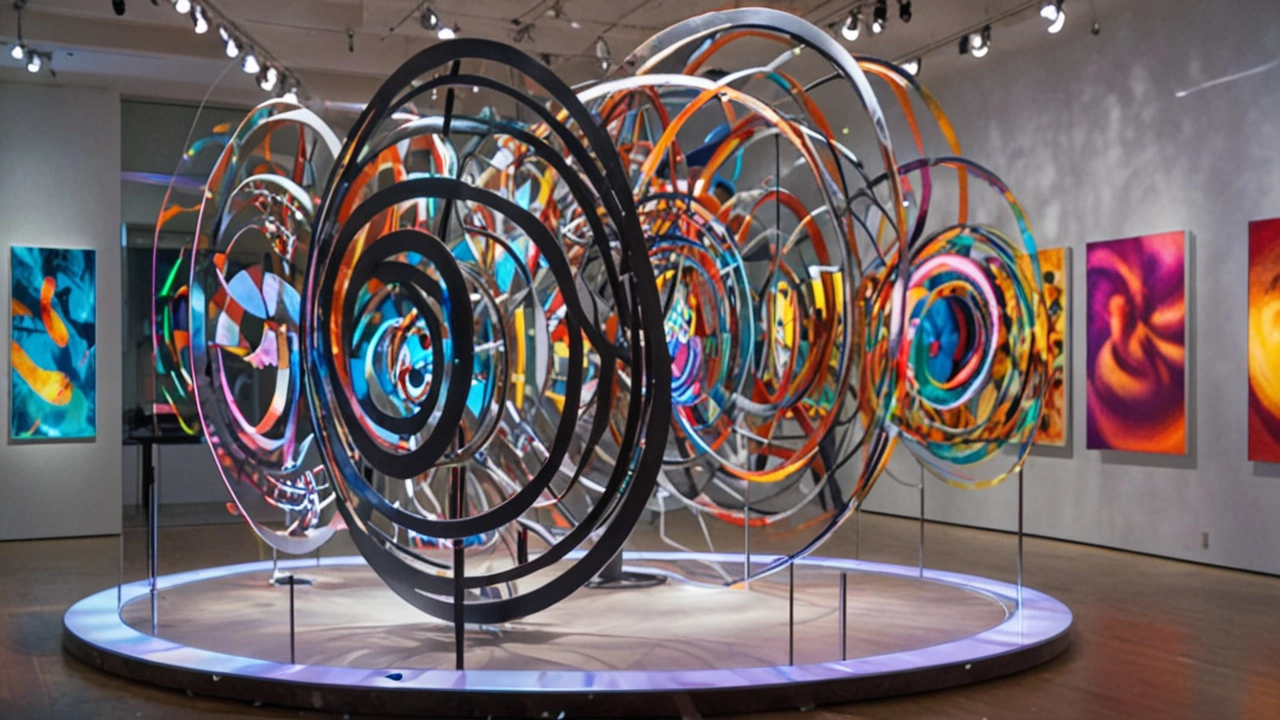Movement Sculpture
Movement sculpture grabs attention because it moves — literally or through implied motion. Whether a wind-driven mobile, a motorized installation, or a piece that changes with the viewer, movement sculptures force us to think in time, not just space. Here you'll find clear ways to spot different types, quick tips for seeing them, and ideas if you want to try making one.
Kinetic and mechanical pieces use motors, gears, or simple balances to create repeated motion. Think Alexander Calder’s mobiles for gentle balancing or the later motorized works that spin and flash. These sculptures often explore rhythm, balance, and engineering as much as form. Materials can be metal, wood, plastic, or found objects; durability and weather resistance matter if the piece lives outdoors.
Land art and large public movement sculptures use environment and scale to add motion. Wind, water, and seasonal changes become part of the work. These pieces connect to city planning and public spaces — they invite walking, pausing, and watching. When you encounter them, notice how light and weather change the experience across a day or a year.
How to look at movement sculpture
Conceptual and performance-linked movement sculptures come from avant-garde lines like Fluxus and installation art. Here the motion might be human-driven, time-based, or symbolic. Movement is not only physical; it can be narrative, social, or political. These works ask you to be part of the action or reflect on the action happening.
First, watch for a full cycle of motion. Many pieces reveal their structure only through repetition. Second, study materials up close — welds, joints, and supporting frames tell you about the artist’s technical choices. Third, consider context: a moving piece in a gallery has a different purpose than one on a windswept plaza.
Want to start making one?
Want to start making a simple movement sculpture? Begin small. Use a lightweight armature, like thin steel or hardwood dowel, and balance found objects on pivots. Add a small motor or let wind do the work. Test indoors to refine balance, then move outside if needed. Keep safety in mind: secure moving parts and avoid loose fragments.
Collecting or curating moving pieces requires practical checks. Ask about maintenance, motor life, weatherproofing, and electrical needs. Request documentation on installation points and cycle timing. For public projects, confirm anchor points and local permits.
Key movements linked to movement sculpture include Futurism, Constructivism, Fluxus, kinetic art, and installation art. Each brings a different goal—speed and machine aesthetics, social function, playful participation, or immersive time-based experiences. If you enjoy art that changes while you watch, movement sculpture offers surprises and a lasting way to rethink stillness.
Look for movement sculpture in science museums, contemporary art museums, and city plazas. Artists to search include Alexander Calder, Jean Tinguely, and Theo Jansen’s Strandbeests for wind-powered engineering. Online videos help you check motion before you visit. If you plan a project, read local code on moving installations and talk with an engineer for large pieces. Small experiments at home teach balance and timing fast.

